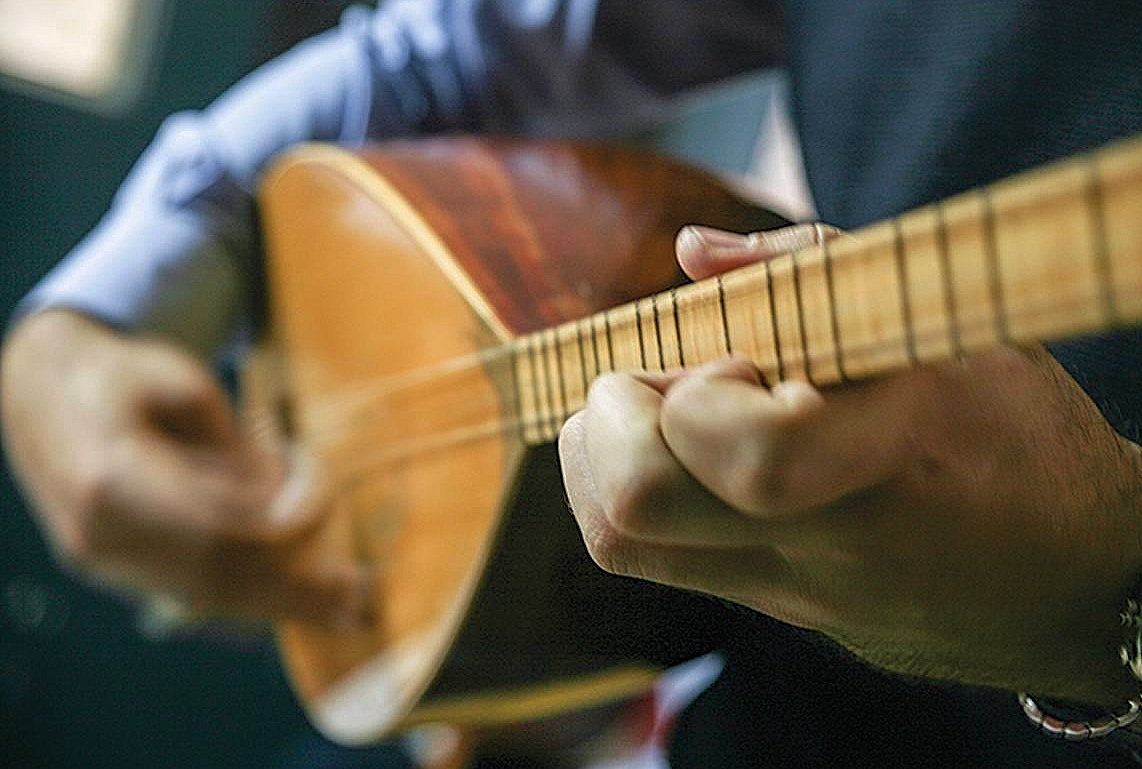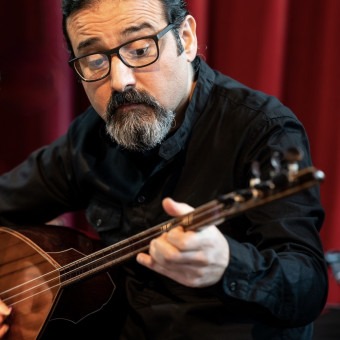Music Teachers - Saz
About Saz lessons
Is there a difference between a saz and a baglama?
There is no difference between a saz and a baglama. The baglama is often simply called the saz and has been the minstrel's instrument in Turkey for centuries. Saz means instrument in Turkish. Minstrels have traditionally, in all cultures, sung about love, sorrow, resentment, and happiness, accompanying themselves on the saz.
Songwriter Troubadours
The minstrels conveyed stories and history through song and play. They were, in effect, the songwriters of the past! The baglama is widely played today at celebrations and as an accompanying instrument.
Is Baglama a type of Lute?
The baglama is a pear-shaped lute and comes in both long- and short-neck versions.
How many strings does a saz have?
The baglama has seven strings, divided into pairs of two, two, and three. The saz can be tuned in various ways and has different names depending on the region and size: baglama, divan sazi, bozuk, cogur, kopuz irizva, cura, tambura, etc. The cura is the smallest member of the baglama family; larger than the cura is the tambura, tuned an octave lower. The divan sazi, the largest instrument in the family, is tuned another octave lower.
A brief history of the saz
The baglama is a synthesis of historical musical instruments in Central Asia and pre-Turkish Anatolia. It is partly derived from the Turkish komuz. The kopuz, or komuz, differs from the baglama in that it has a leather-covered sound box and two or three strings made of sheep gut, wolf gut, or horsehair. It is played with the fingers instead of a pick and has a fretless fingerboard.
What is the meaning of the word Baglama?
Baglama literally means "something that is fixed," likely a reference to the instrument's tied frets. The word baglama first appears in texts from the 18th century. Baglama/Saz is the most commonly used stringed instrument in Turkey.
Türkü with saz accompaniment
Besides being a solo instrument, the saz is, just like the chitarrone and the lute, also a perfect accompaniment to singing.
What is Türkü?
Türkü is the collective name for traditional songs from various regions of Turkey. These songs are very well-known and are often passed down by word of mouth or by so-called Asiks (troubadours, storytellers, and singers).
What is a saz made of?
A baglama consists of a sound box (called a tekne), made of mulberry or juniper, beech, spruce, or walnut, a spruce top (gogus), and a neck made of beech or juniper (sap). The tuning pegs are known as burgu (literally, screw). The fishing line frets are attached to the neck and can be moved if necessary.
Is the saz difficult to learn?
Just like with any other instrument, you'll progress fastest with regular, focused practice. The advantage of the saz is that it's a relatively accessible plucked instrument that you can master in a short time!
Do you play the saz with a pick or your fingers?
The baglama is usually played with a mizrap or tezene, a type of pick made of cherry bark or plastic. In some regions, it's played with the fingers in a style known as selpe or serpe.
Can you play along with others when you play the saz?
The saz is an excellent instrument for accompanying others. For example, by playing well-known songs on your saz with a Ney? See if there's someone in your area who plays the Ney and take lessons in interpretation and repertoire with an experienced teacher!
More information
Looking for an experienced saz teacher near you?
On this site, you'll find several saz teachers who teach in their own homes or studios. Contact a certified saz teacher through this website and book a trial lesson!
Trial Saz Lesson
The trial lesson is the perfect opportunity to discuss the number of lessons, the location, and the lesson prices. Find out where you can rent or buy a saz. It's important to get to know your future teacher first. Book your first lesson package and receive a free trial lesson. (Regular price: €25.00)
Private Music Lessons for All Ages
On the Vivaldi Music Lessons website, you'll find all kinds of music lessons for beginners and advanced students. Instrumental and vocal lessons for children, teens, and adults.
Why Are Saz Lessons Important?
Being able to play solos or accompany well-known türküs and songs on your saz and make music with friends is a source of joy. It gets you moving and gives you positive energy! Making music is one of the most motivating and healthy activities in life!
Music lessons near you!
- For children, teens, adults - all levels
- Flexibility with lesson packages of 5 or 10 lessons of 30, 45, or 60 minutes
- Free trial lesson with purchase of a lesson package (normally €25)
- Private lessons at the teacher's or your home
- A friendly and positive atmosphere during your lessons
Lesson Packages
Lesson times, payment, and location are arranged individually between you and your teacher. Packages of 5 or 10 lessons of 30, 45, and 60 minutes.
Online Lessons
If you would like to take online lessons, you can contact the teacher of your choice directly to discuss the options.



